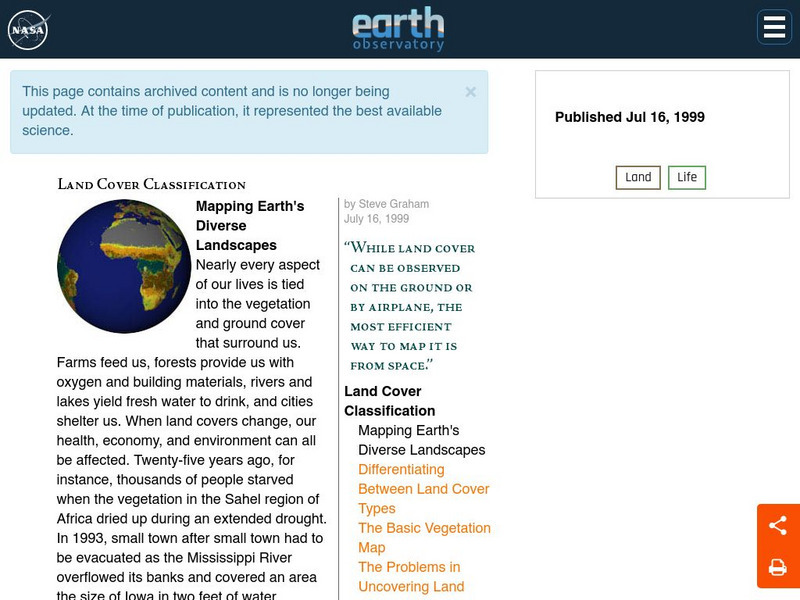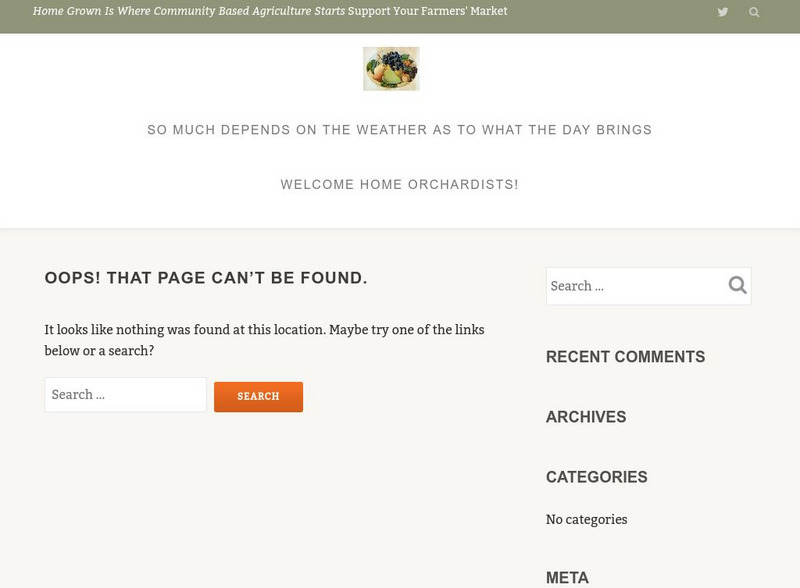Hi, what do you want to do?
Curated OER
Algae Experiments
Learners describe the characteristics of algae. In this biology instructional activity, students perform a series of experiment to explore algae. They investigate the basic things algae need to survive.
Curated OER
Trash Pizza
Students work together to identify items sent to landfills. They summarize percentages of the different items found in landfills. They create a pizza pie graph of all of the components found in landfills.
Curated OER
Intermediate Sentence Completion Exercise 31
In this intermediate sentence completion exercise 31 worksheet, students complete 10 sentences interactively by selecting the word(s) given, with immediate feedback.
Curated OER
Mushroom Prints
Students create a mushroom spore design on paper while studying the facts on fungi.
Curated OER
March of the Penguins DVD Worksheet
For this movie comprehension worksheet, students view the DVD "March of the Penguins", then complete 31 short answer comprehension questions about the movie.
Curated OER
The Achievements of the Sumerian Empire
Sixth graders identify four achievements of the Sumerians. They explain the importance of the inventions. They write about a Sumerian invention.
Curated OER
The Rainforest
Young scholars practice their reading comprehension skills by reading about the rainforest. They answer questions related to the text to test for comprehension.
Curated OER
Worksheet 4. Reading: A Green City
In this reading comprehension worksheet, students read the passage about a new city in Abu Dhabi. The reading is titled A Green City. They then answer the 8 questions pertaining to the passage.
Curated OER
My Test Book: Probability
In this math skills activity, students solve 10 multiple choice math problems regarding probability. Students may view the correct answers.
Curated OER
Lava Layering
Learners observe the layering process of lava flow with hands-on activities.
Curated OER
Where Do We Get the Money We Spend?
Students discuss the sources of income for people in their community. They examine why different jobs are paid different wages. They also classify productive resources in the economy.
Curated OER
The American West-Knowledge Test
In this American West worksheet, learners complete a 24 questions test about the American West. Answers are included beneath questions on worksheet.
Curated OER
Reading Comprehension: When Ants Go Marching, They Count Their Steps
In this comprehension worksheet, students read a short selection about ants, then answer 5 multiple choice questions. Answers provided.
Northern Arizona University
Land Use History of North America: Prehistoric Farming on the Colorado Plateau
This is an overview of the Anasazi agricultural developments -- despite unfavorable environmental conditions -- which allowed for the formation of settlements and food sharing.
Other
Population Connection: Food for Thought [Pdf]
This lesson plan and activity will demonstrate how differences in population and resource use combine to affect a population's quality of life. Population demographics, land use patterns, energy, and wealth are explored to increase...
NASA
Nasa Earth Observatory: Land Cover Classification
Learn about the important resources our land offers us: food, water, oxygen, building materials, and more. Discover how scientists have been mapping land for years trying to prevent disasters and to collect environmental information.
Mayflower History
Mayflower history.com: Cooking and Food
Describes the diet of the Pilgrims, beginning with the voyage across the ocean, then what they were able to catch or harvest from the land when they arrived, and what they learned from the native peoples. Also describes some recipes the...
Countries and Their Cultures
Countries and Their Cultures: Iraqw
The Iraqw are an agrico-pastoral people who live in north-central Tanzania. With the expansion of their territory, the Iraqw have come to interact and coexist with other ethnic groups. Maize is the staple crop of the Iraqw; it is...
California State University
Fantasy Food Groups Fun Land
Come slide down chocolate mudslides and bounce on marshmallows in this crazy imaginary art instructional activity. Students work to create a fantasy land made entirely of different foods. Students are encouraged to use knowledge of the...
Other
Gems in Israel: The Biblical Seven Species
Use this site to learn about how Israel's Seven Species, wheat, barley, vines, figs, pomegranates, olive oil and honey play an important role in Israel's land, culture, and cuisine.
Other
Nez Perce Tribe: History: Frequently Asked Questions
Detailed descriptions of food, land, government, shelter and tools used by the tribe before and after contact with white men. Includes photos and maps.
Other
Fruit From Washington: Crop Harvests at Home in America in World War Ii
This site is filled with posters from World War II, the Great Depression, and World War I which encouraged using food wisely, growing victory gardens, and helping harvest the crops on commercial farms.
BSCS Science Learning
Bscs: Frog Eat Frog World
Using maps and graphs of large data sets collected in FrogWatch, students will determine the range, preferred land cover, and proximity to water of the American bullfrog to figure out the bullfrog's requirements for food, water, and...
Alabama Learning Exchange
Alex: Wildlife Math
This integrated lesson plan is the result of collaboration between Chip Blanton, a wildlife management teacher, and Greg Pendergrass, a math teacher (Ft. Payne High School). Learning to manage wildlife requires an understanding of...























